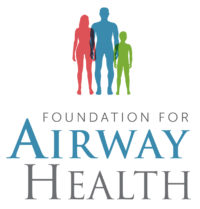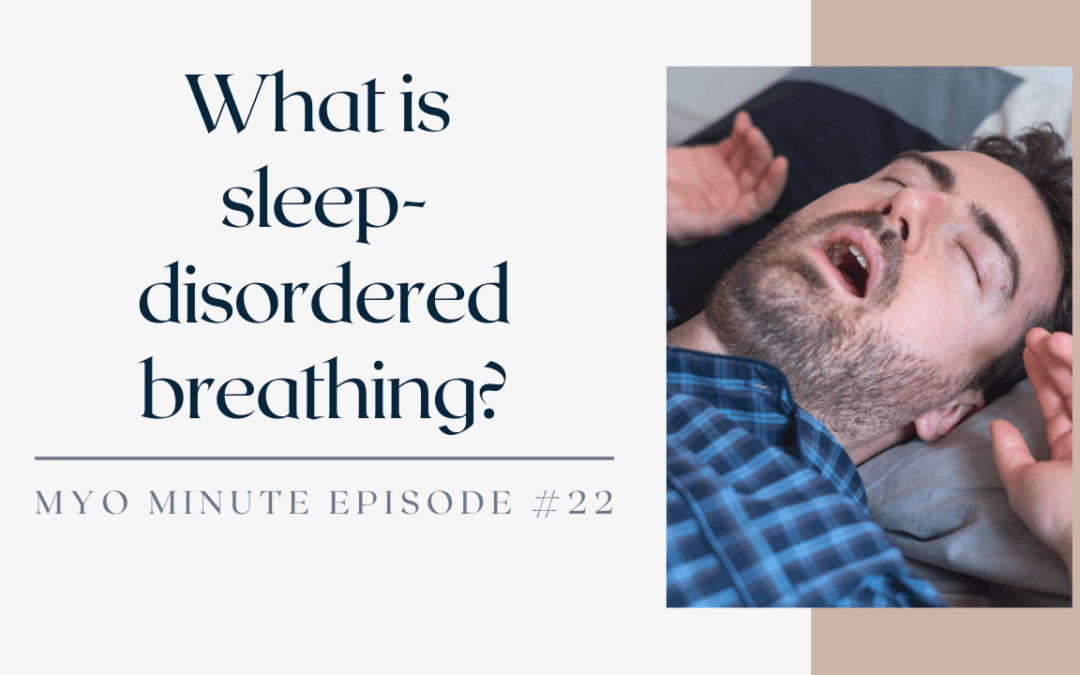Certainly you know someone who has sleep-disordered breathing? Perhaps your partner or parent has been diagnosed and you have some sort of understanding. But, after helping to change the lives of thousands of people, I’ve learned that many of you can’t answer the question “what is sleep-disordered breathing?”
In this episode of the Myo Minute, I’m going to be answering the question “what is sleep-disordered breathing”. You will likely find something here that you didn’t know!
You can watch the video below or read more about “what is sleep-disordered breathing” below. If you want the whole enchilada all at once, you can read the Ultimate Guide To Sleep Disordered Breathing here.
What is sleep-disordered breathing?
Sleep-disordered breathing is a catch-all term used to describe a number of different chronic conditions in which partial or complete cessation of breathing occurs many times throughout the night, resulting in generalized fatigue, poor motivation, and lack of energy which decreases the quality of life for many people.
Download Your Sleep Apnea Self-Assessment
Sleep-disordered breathing includes:
Open-mouth breathing
Oral breathing, a learned habit, is a result of incorrect oral rest posture. When the tongue is not correctly resting against the roof of the mouth, with the mouth closed and lips sealed, the airway cannot be supported. Oral breathing can be the cause of chronic congestion, upper respiratory infections, dental and periodontal complications, forward head posture, and craniofacial development anomalies, as well as a risk factor for snoring, upper airway resistance syndrome and obstructive sleep apnea. Another important thing to consider is the possibility of a tongue-tie. When a person doesn’t have the correct oral rest posture, it’s important to determine why. Is it because the muscles are so weak, or is it because there is a physical reason, like a tongue-tie.
Read the Ultimate Guide to Breathing
Read the Ultimate Guide to Tongue-Ties
Snoring
Normal breathing is quiet and through the nose. It is effortless and allows the body to get the deep restorative and reparative sleep needed to wake refreshed and motivated to embrace the day with joy and enthusiasm.
Snoring, a potentially serious form of obstructed breathing can be caused by a number of different factors such as oral anatomy, alcohol consumption, weight, and chronic congestion. Snoring is the loud, annoying sound that occurs when air flows past the relaxed tissues in the throat and causes those tissues to vibrate.
Upper Airway Resistance Syndrome (UARS)
This syndrome is similar to obstructive sleep apnea in that the size of the airway is decreased by relaxation of the oral tissues, resulting in sleep arousals and daytime drowsiness. This syndrome is different from obstructive sleep apnea because the apneas and hypopneas are either very low or absent in patients with UARS. The symptoms of UARS tend to be similar to those of obstructive sleep apnea, but less severe.
Sleep Apnea
Sleep apnea is a common and serious sleep disorder that causes cessation of breathing during sleep. Sleep apnea can make people wake up in the morning feeling unrefreshed and still tired, even after a full night of sleep. During the day, many sufferers experience a lack of concentration, daytime drowsiness, low energy levels, and lack of motivation.
The main types of sleep apnea are:
Obstructive sleep apnea (OSA)
In this, most common form, the airway repeatedly becomes blocked (by the collapse of the throat muscles, or by the tongue taking up space in the throat area), limiting the amount of air that reaches the lungs. When this happens, a person may make gasping sounds or snore. The brain, being alerted to oxygen deprivation, arouses the body. This may happen a few times a night, or in severe cases, much more than that, and it is usually not remembered consciously by the person.
There are two major events that characterize obstructive sleep apnea:
- Hypopnea: Defined by abnormally shallow or slow breathing; In sleep hypopnea, the airway is only partially obstructed
- Apnea: Defined by temporary cessation of breathing; In sleep apnea, the airway becomes fully obstructed
Central sleep apnea
This less common form of sleep apnea, occurs when your brain doesn’t send proper signals to the muscles that control breathing
Complex sleep apnea syndrome
This form occurs when someone has both obstructive sleep apnea and central sleep apnea
I think the most important thing to consider if you’re wondering about “what is sleep-disordered breathing” is to make sure you are taking care of yourself!
If you suspect or have sleep apnea, I would encourage you to book your exam to discuss how orofacial myofunctional therapy can help. Orofacial Myofunctional Therapy is a great tool for sleep-disordered breathing, and one that many people in today’s mainstream medical world never hear about.
I’m happy to help!


Meet Carmen Woodland
I found this path of passion years ago as a dental hygienist. After a stint in graduate school to earn my M.B.A., I decided that I needed to pivot. My heart was no longer in scraping teeth, but making a much bigger impact on lives touched by myofunctional impairment.
My story is personal and close to home. My sweet granddaughter was passed back and forth amongst doctors and therapists for years trying to figure out her speech, breathing, sleep, chewing and swallowing issues. It wasn’t until I completed more training that I knew her problem was a significant tongue-tie. Bingo.
Fast forward to now. I’m a crusader. A warrior. A voice for those who can’t find theirs, or who don’t have one.
I left clinical hygiene practice to start Integrative Myofunctional Therapy. It has evolved from a way to make a living, into an obsession!
I see clients all over the world and provide innovative, virtual therapy in the remotest of places.
In addition, I also
- Teach other dental hygienists, speech therapists & dentists how to become myofunctional therapists through the Myofunctional Therapy Training Acadedmy.
- Coach dental offices on how to implement myofunctional screening into the daily practice
- Speak in various settings
I’m an airway provider for the Foundation of Airway Health, where I work diligently for the recognition, diagnosis, and treatment of airway-related disorders.
And last but not least, I’m a proud member of several professional associations that afford me the opportunity to learn so that I can help you. My professional memberships include:


